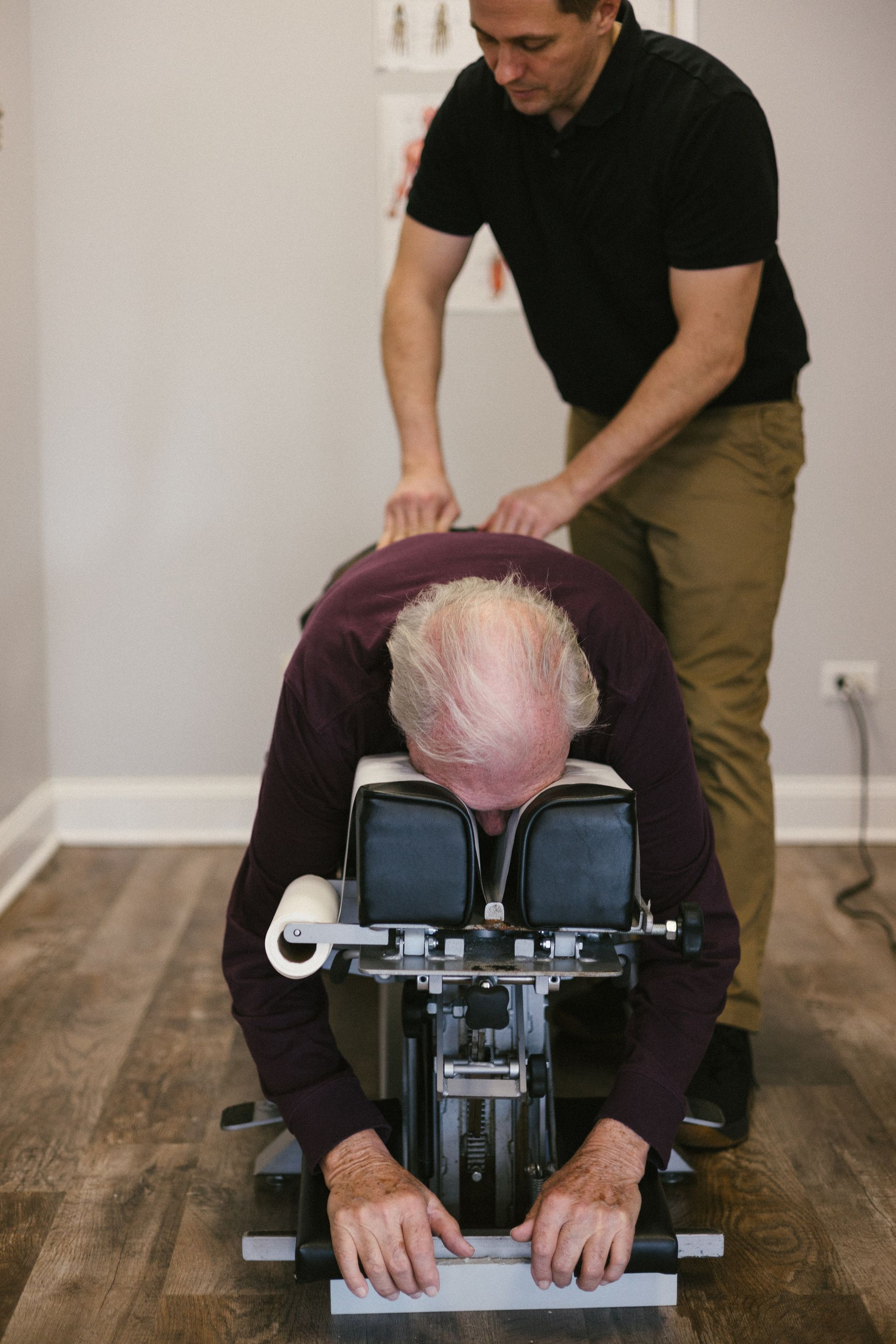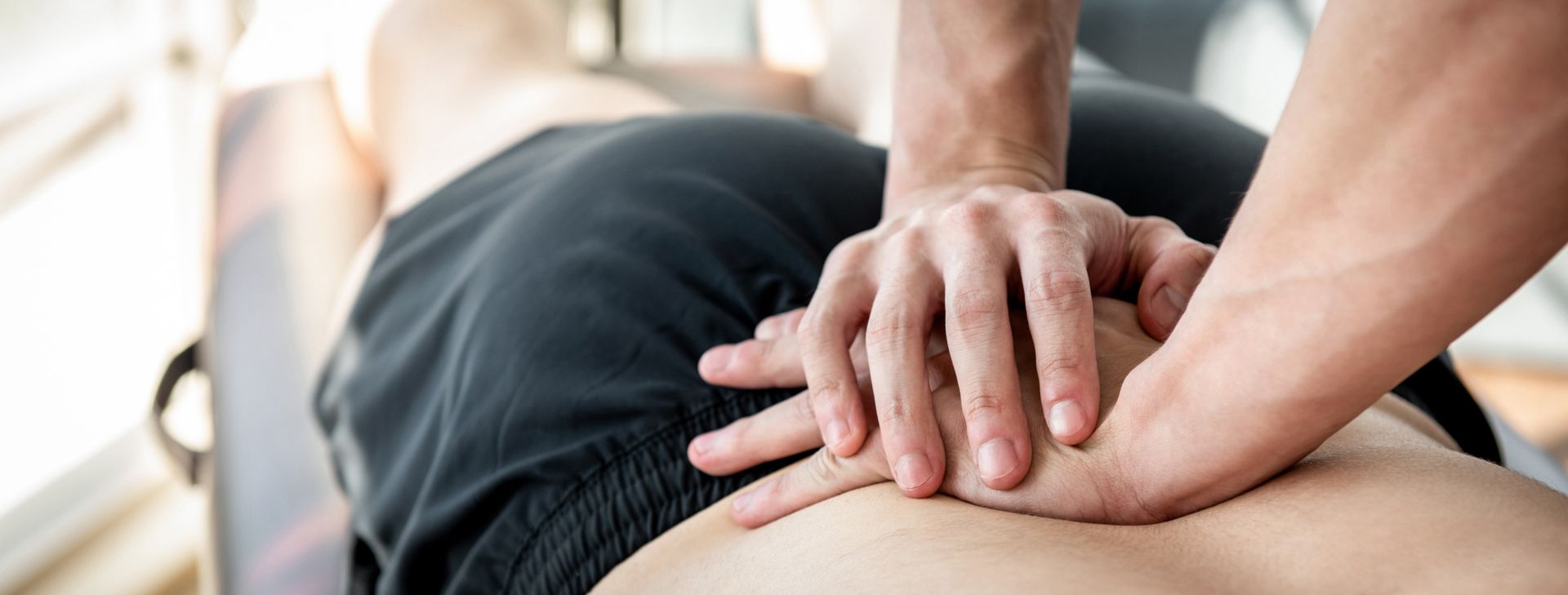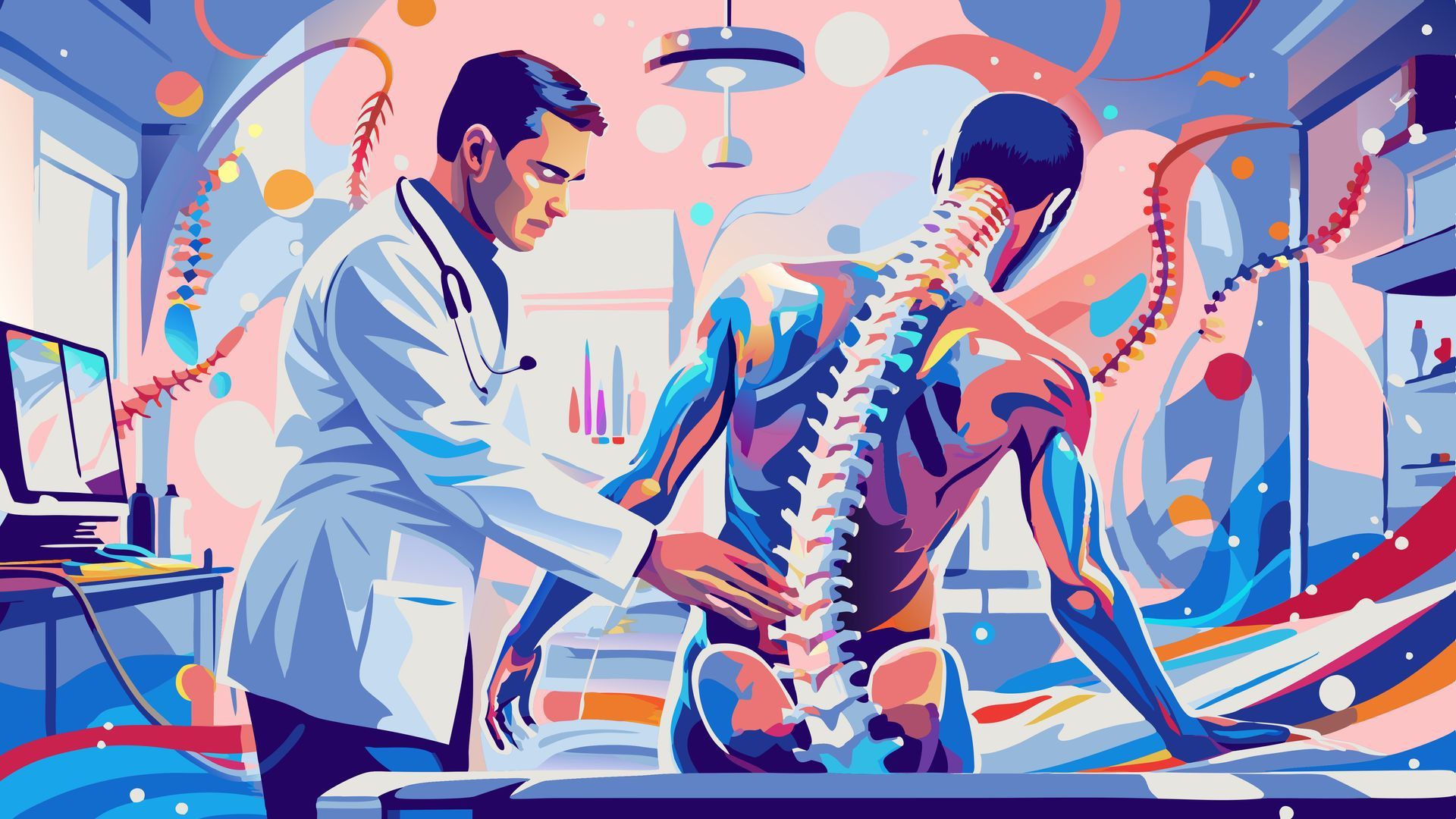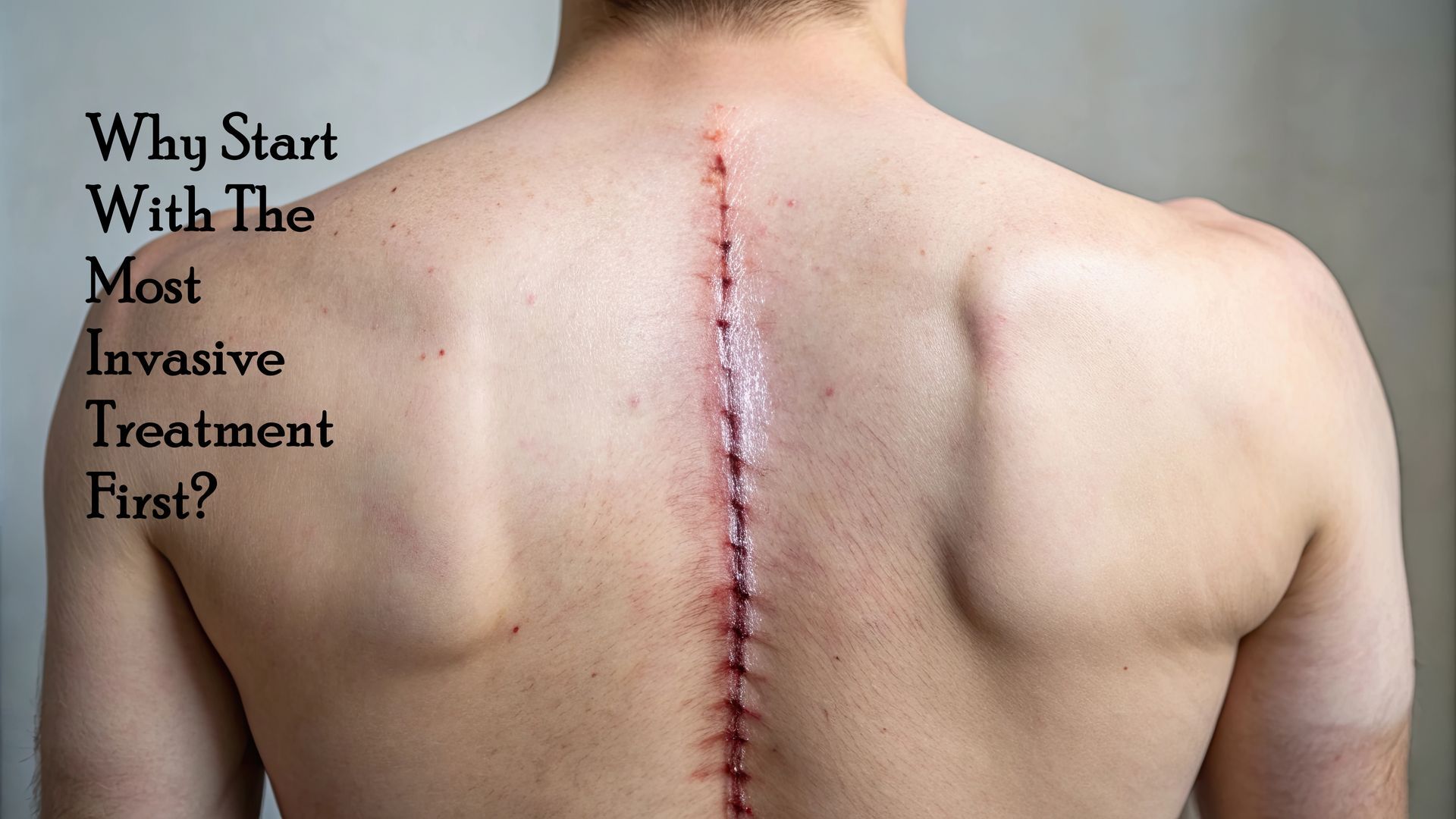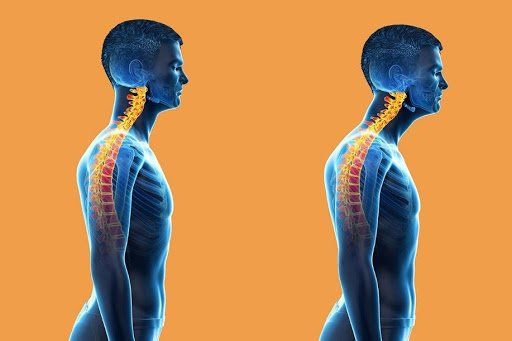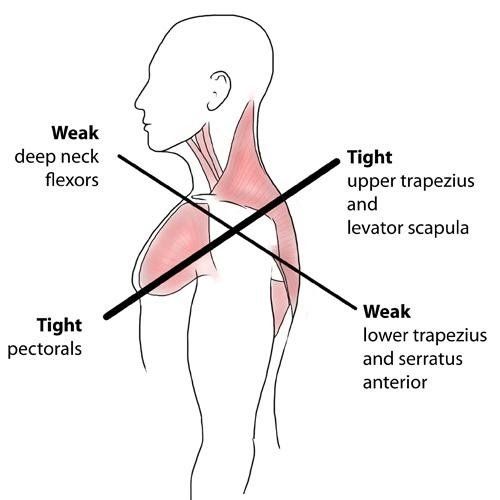How To Treat Upper Crossed Syndrome or Forward Head Posture?
Due to the increasing popularity of multimedia devices such as computers and smartphones, frequent users often exhibit the wrong posture.
Forward head posture is a typical poor neck posture. It often coexists with Upper Crossed Syndrome.
What is Upper Crossed Syndrome?
“Upper Crossed Syndrome (UCS) occurs when the shoulders, neck, and chest muscles are usually deformed due to poor posture.”
No one wants the side effects of this common postural deformity, which affects between 66% and 90% of the population.
Which Muscles are Most Affected by Upper Crossed Syndrome?
- Levator Scapula Muscles: The muscles that are mostly affected are the levator scapula and upper trapezius, which are the back muscles of the neck and shoulders. First, they become highly strained and overactive.
- Major and Minor Pectoralis Muscles: Then front chest muscles called the major and minor pectoralis are tightened and shortened. When these muscles are overactive, the surrounding opposing muscles are underused and become weak.
- X-Shape Development: Overactive and inactive muscles can then overlap, leading to X-shape development.
What Are The Causes of Upper Crossed Syndrome?
Most upper crossed syndrome cases occur due to persistent poor posture. Specifically, standing or sitting for long periods with the forward head posture.
People often take this position when:
- Driving
- Biking
- Reading
- Watching TV
- Carrying a heavy backpack
- Using a smartphone or computer
- Sleeping with their head too elevated
Other Causal Factors Include:
- Past neck injuries
- Weak neck muscles
- Improper breathing
- Professions involving repetitive movements
What Symptoms Are Related to Upper Crossed Syndrome?
Forward Head Posture: Effects on Health - People with upper crossed syndrome exhibit curved, rounded shoulders and a forward-hunched neck. Deformed muscles put stress on surrounding bones, joints, muscles, and tendons. In most cases, this leads to symptoms such as:
What are the Treatment Options for Upper Crossed Syndrome?
The treatment options for the upper crossed syndrome are:
- Chiropractic Care
- Physical Therapy
- Exercise or Stretches
- Lifestyle Changes
A
combination of all these is usually recommended.
1. How Can Chiropractic Care Help with Upper Crossed Syndrome?
Because upper cross syndrome deals with muscle imbalance, posture, and musculoskeletal system, chiropractic care is an excellent way to treat the root causes and improve symptoms of UCS.
Chiropractic care aims to realign the spine, which helps balance muscle strain, tightness, weakness, and improve posture by relieving pain.
Chiropractor knows exactly which exercises and physical therapy you need to correct upper cross syndrome. While you might feel some pain or discomfort, you must stretch! It's also important to start easy.
Chiropractic care helps you heal much faster than exercises and therapy alone. After a chiropractic adjustment, your joints will become more aligned so that the muscles involved can relax and stretch accordingly.
2. How Can Physical Therapy Treat Upper Crossed Syndrome?
Physical therapy is the best course of action when it comes to Upper Crossed Syndrome. A physical therapist not only relieves the symptoms of pain but can also eliminate the underlying causes of the pain.
A physical therapist can make a customized treatment plan that addresses your pain levels and symptoms. They also use manual therapy, where they use their hands to relieve pain and stiffness and encourage better body movement.
3. Exercises & Stretches Can Correct Upper Crosses Syndrome
Exercise the muscles around your neck, shoulders, and chest at least two or three times a week. Stretches can help loosen the tight muscles in your neck and upper back. Try to exercise your core, back, and abdominal muscles every day, even if you are only going for a short walk.
There are many other soft tissue techniques you can use to address your muscles, including:
- Lying exercises
- Sitting exercises
- Specific at-home exercises;
- Using lacrosse balls
- Foam rolling
- Massage
How Lifestyle Changes Can Prevent Upper Crossed Syndrome in Future?
With time, forward head posture or UCS can be corrected by making these lifestyle changes:
- Start By Consciously Evaluating Your Posture: Stand in front of a mirror and look at yourself. What do you see? Notice if your head is crooked or if your shoulders are rounded and if you can see the back of your hand.
- Use A Firm Pillow & Sleep : Avoid uncomfortable sleeping positions. Choose a pillow that supports the natural curve of your neck. If your pillow is too low or too high, it can lead to muscle imbalance that is difficult to correct.
- Make Sure Your Work Area Is Set Up Ergonomically: Consider these ergonomic factors when setting up your workspace. The laptop or computer must be at eye level or higher. Your seat must have lumbar support. Remember to take breaks throughout the day. Do not sit for longer or in one position without taking breaks to move and stretch!
- Adjust Your Backpack: Choose a backpack that is in proportion to your body. Don't choose a large backpack unless you are a huge person. Also, avoid carrying your backpack on one shoulder to avoid excessive stress on one side of your neck.
- Place A Rolled-Up Bath Towel Under Your Neck: If you notice that your head is forward, lie on a hard surface (such as the floor), roll the bath towel and place it behind your neck near the top of your shoulders to make a wedge for the neck. Lie there for 5-10 minutes.
- Watch Your Weight
- Wear Shoes That Provide Support
Along with chiropractic care, implementing small daily lifestyle changes will help combat UCS and achieve better posture. Over time, you will start seeing and noticing changes in yourself!
How is Upper Crossed Syndrome Diagnosed?
UCS or forward head posture has several distinctive features that your doctor recognizes. This includes:
- The head is often directed forward
- The spine curves inward at the neck
- The spine curves outward at the upper back and shoulders
- Round, long, or raised shoulders
If these physical features are present and you are also experiencing symptoms of UCS, then your doctor will diagnose the condition.
Upper Crossed Syndrome - Takeaway
Upper crossed syndrome or forward head posture is usually a preventable condition. Practicing proper posture is vital in both preventing and treating this condition. Be aware of your posture and correct it if you are in the wrong position.
Chiropractic Care is an incredible effective option, when it comes to spinal alignment or posture issues. By continuously adjusting certain joints in the neck and spine, chiropractors can help restore posture and normal movement.
Combining our tips for treating forward head posture with regular chiropractic sessions will significantly benefit your
journey to better health and wellness.
If you don’t have an amazing chiropractor
Contact us today!
Family Chiropractic Plus is dedicated to your overall health and well-being, which is why we offer regular
chiropractic adjustments in order to restore your body’s natural state of
optimal health, while also providing it with the support it needs to heal from any injury, big or small.


